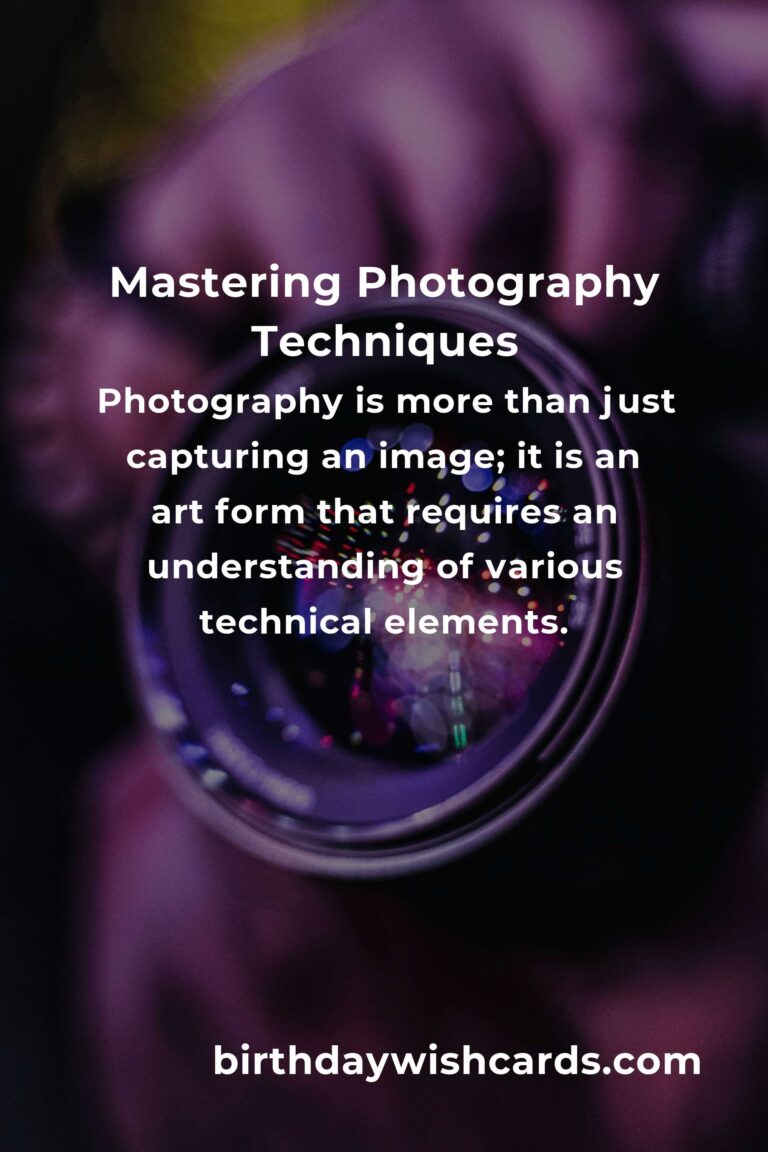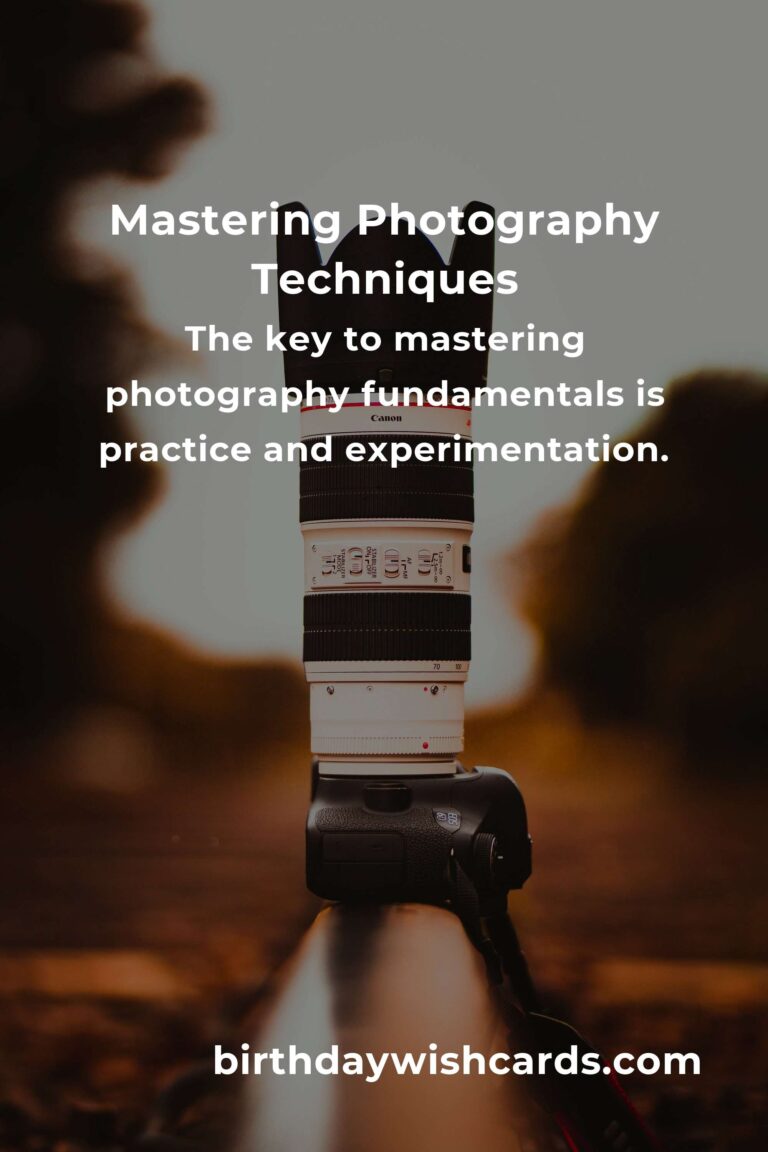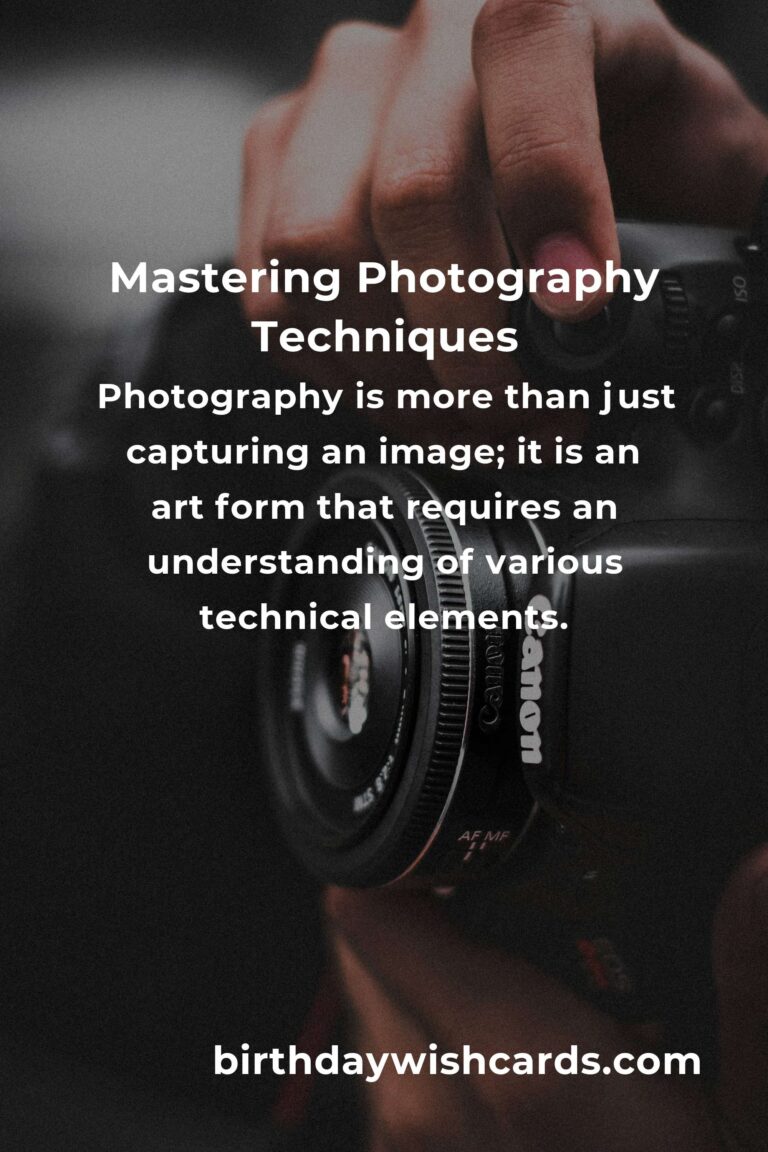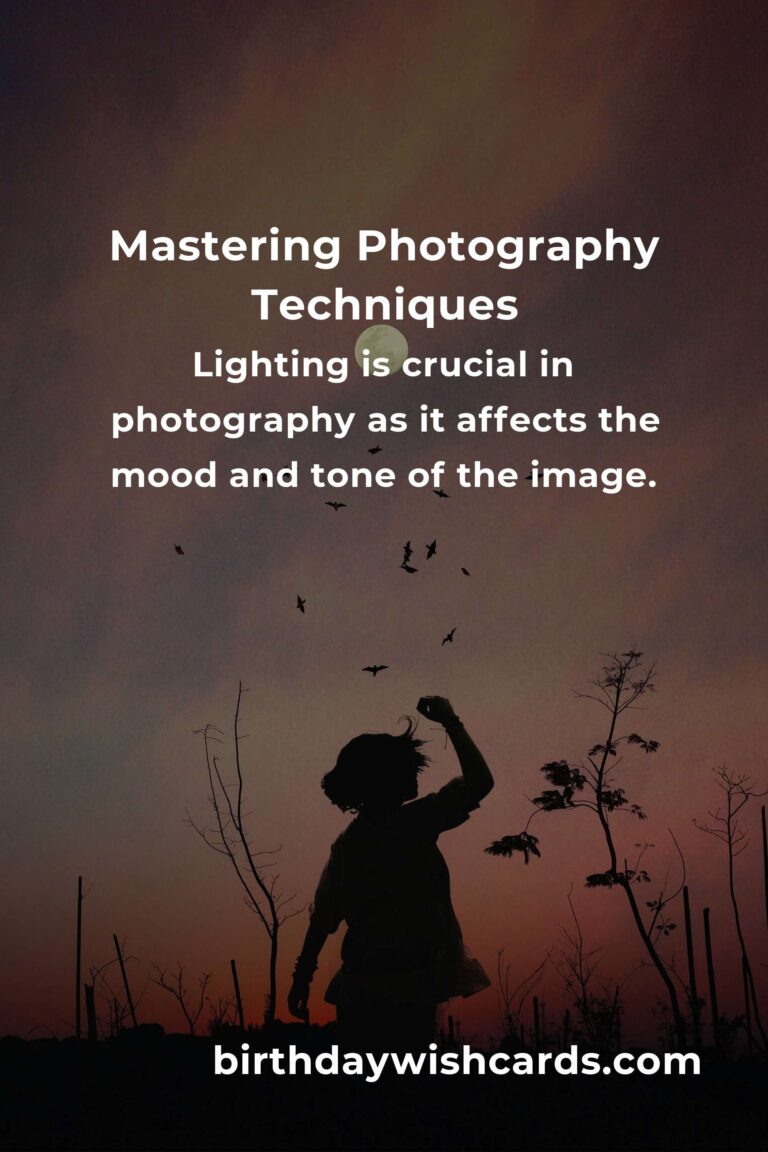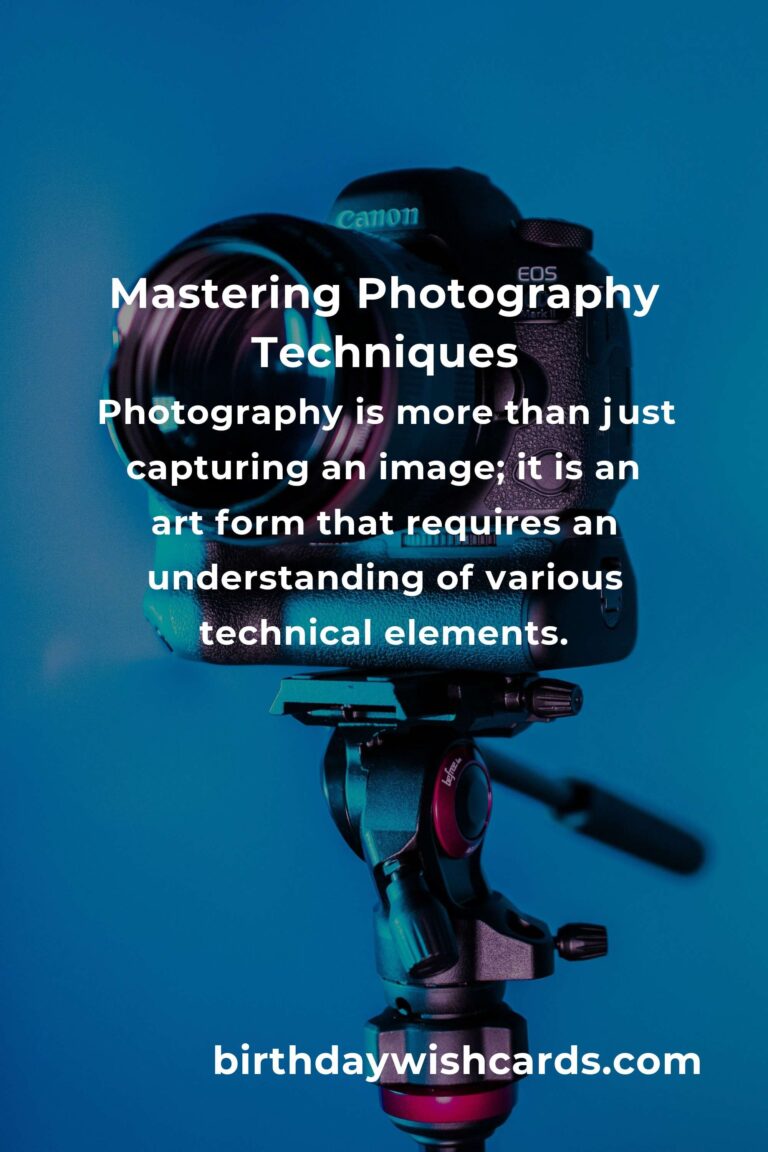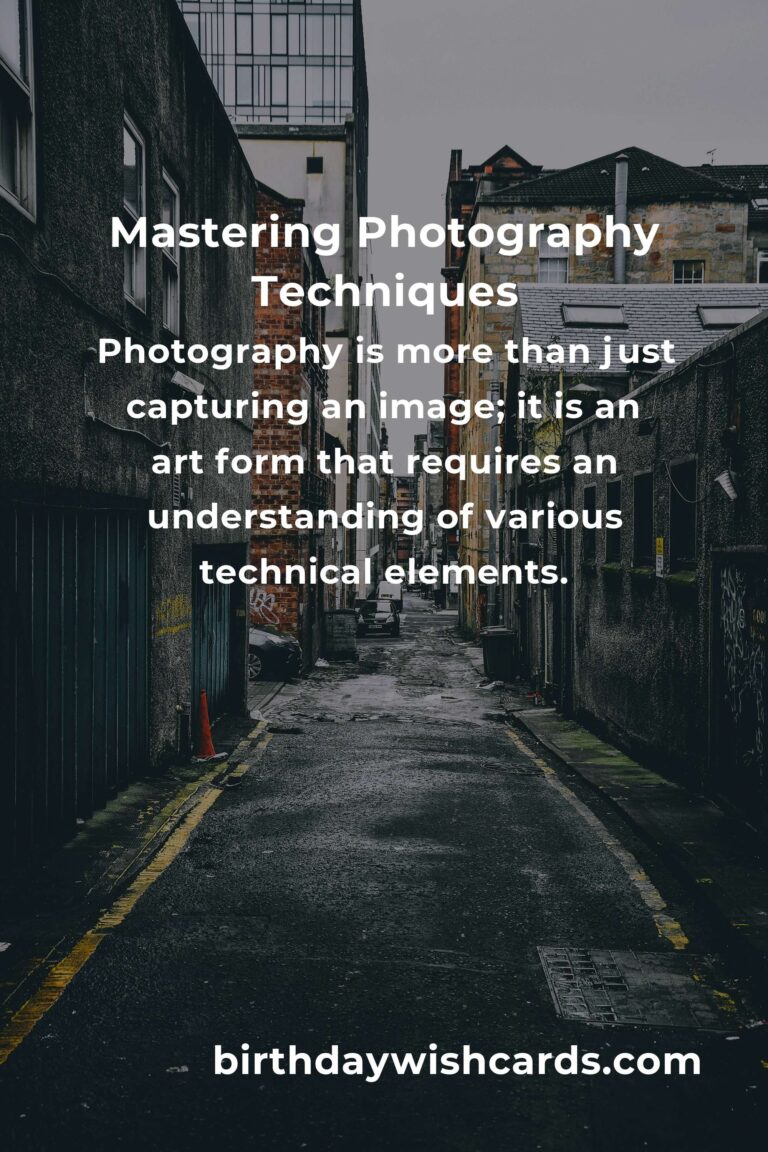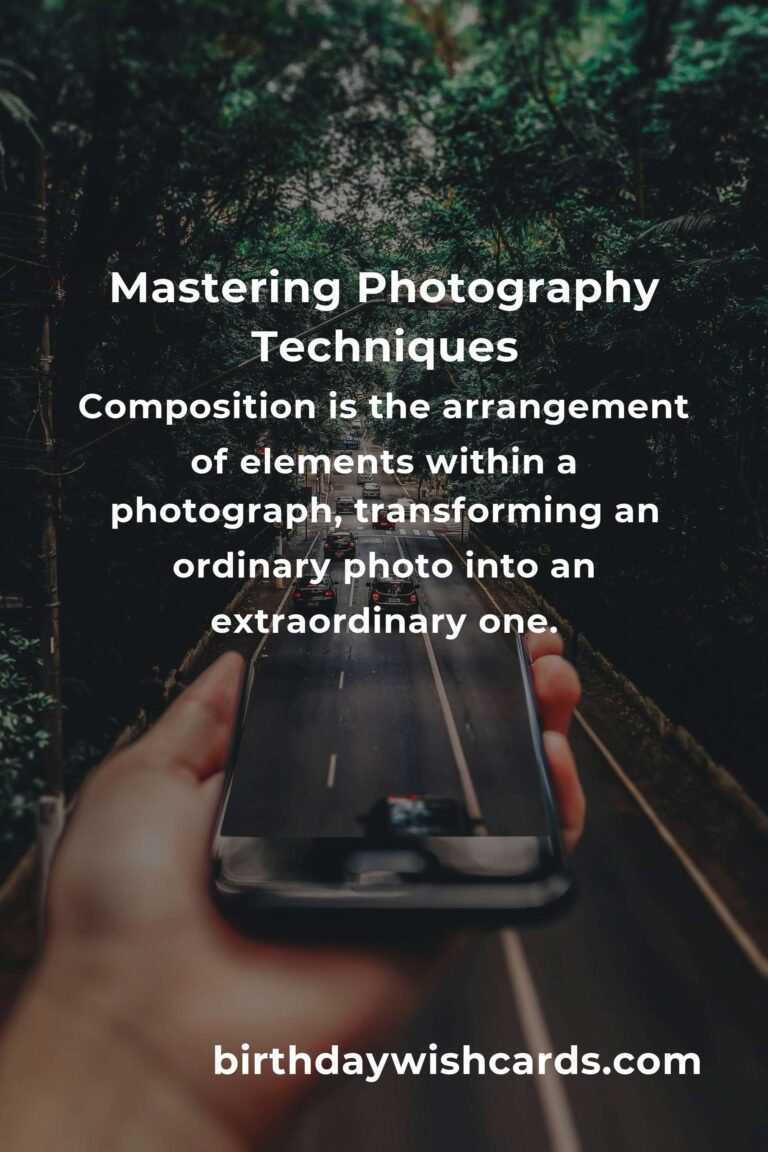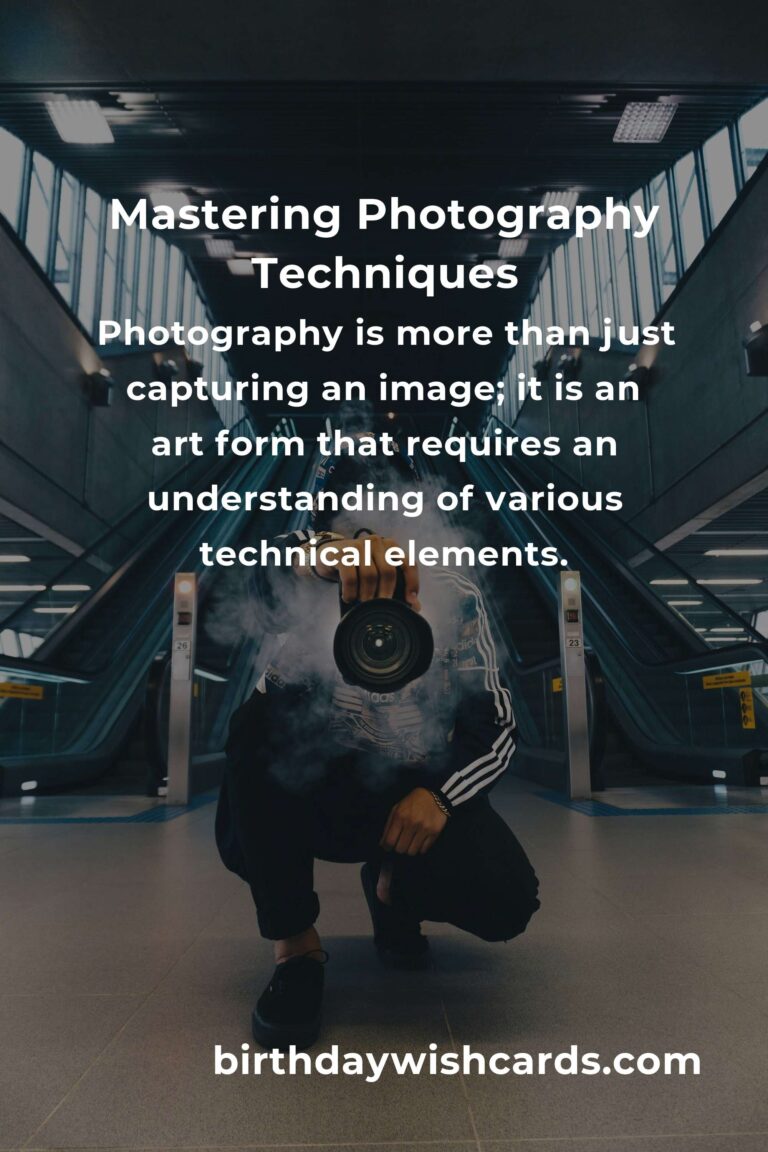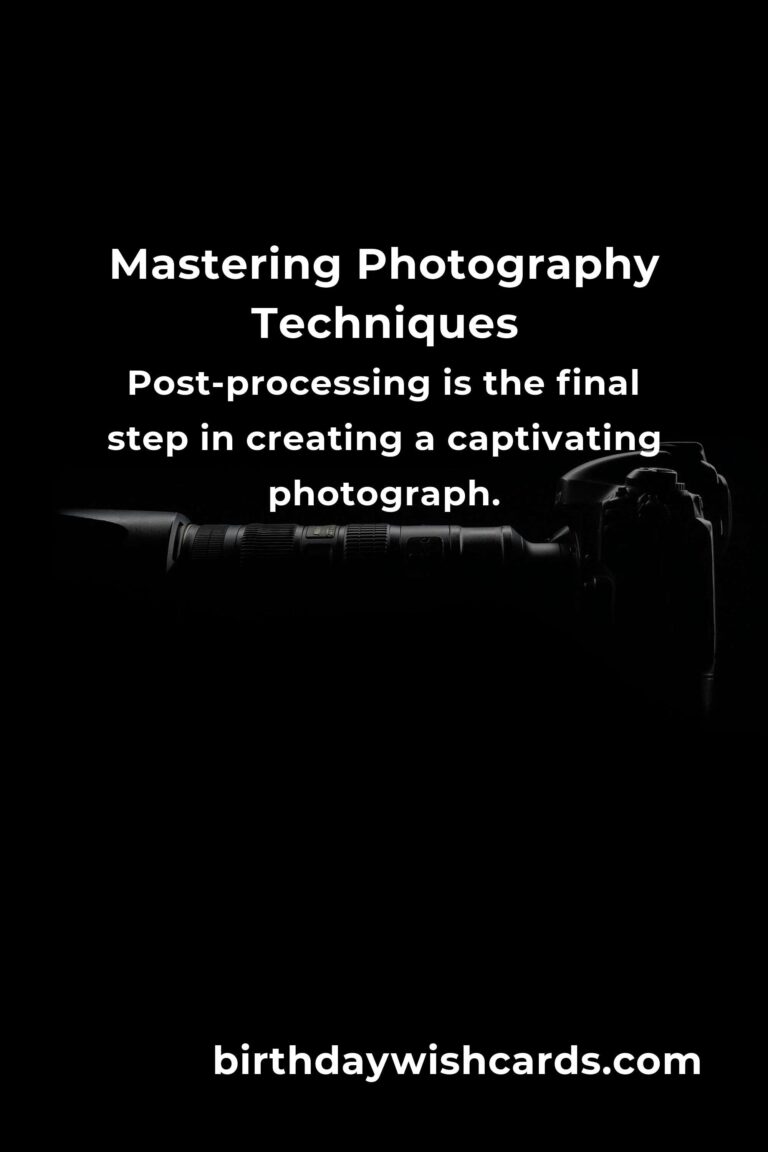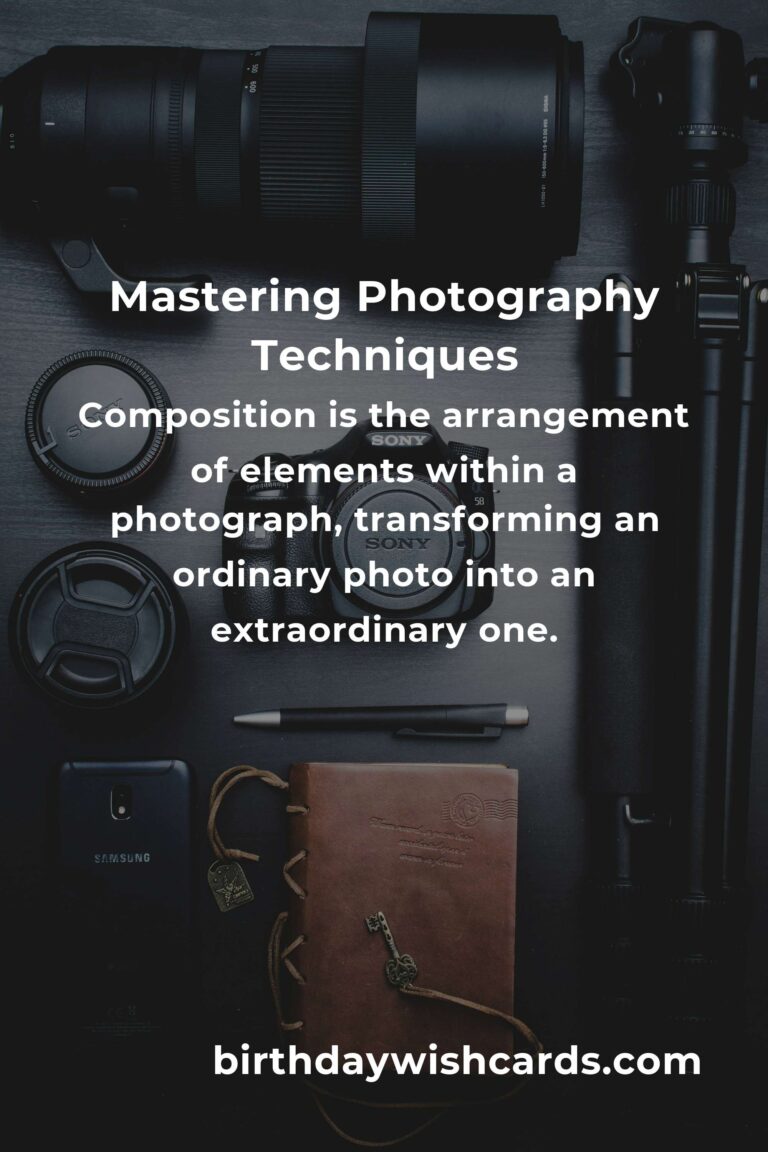
Photography is more than just capturing an image; it is an art form that requires an understanding of various technical elements. By mastering the fundamentals of photography, you can enhance your skills and create stunning images that captivate your audience.
Understanding Exposure
Exposure is the foundation of photography. It determines how light or dark an image will appear. The three main components that affect exposure are aperture, shutter speed, and ISO. Aperture controls the amount of light entering the camera lens. A larger aperture (smaller f-number) allows more light to hit the sensor, making the image brighter, while a smaller aperture (larger f-number) reduces light, resulting in a darker image. Shutter speed determines how long the camera’s shutter remains open to expose light to the sensor. A fast shutter speed freezes motion, while a slow shutter speed can create a sense of movement. ISO measures the sensitivity of the camera sensor to light. A higher ISO setting is useful in low-light conditions but can introduce noise into the image.
Composition Techniques
Composition is the arrangement of elements within a photograph. Applying composition techniques can transform an ordinary photo into an extraordinary one. The rule of thirds is a popular guideline. Imagine your image divided into nine equal parts by two horizontal and two vertical lines. Placing the subject along these lines or at their intersections can create a more balanced and engaging image. Leading lines are another technique that guides the viewer’s eye through the image, creating depth and interest. Symmetry and patterns can also add a pleasing aesthetic to your photos.
The Importance of Lighting
Lighting is crucial in photography as it affects the mood and tone of the image. Natural lighting can be unpredictable, but it offers a broad range of effects depending on the time of day and weather conditions. Golden hour, which occurs shortly after sunrise and before sunset, provides soft, warm light that is ideal for photography. Artificial lighting gives you more control over the scene. Using tools like reflectors, diffusers, and flash can help you manipulate light to achieve the desired effect.
Post-Processing Techniques
Post-processing is the final step in creating a captivating photograph. Editing software like Adobe Lightroom and Photoshop allows photographers to enhance their images further. Basic adjustments include cropping to improve composition, adjusting exposure for better lighting, and altering colors to match the intended mood. More advanced techniques include retouching to remove imperfections and adding filters for creative effects. While post-processing can enhance a photo, it’s essential to avoid over-editing, which can make images appear unnatural.
Practice and Experimentation
The key to mastering photography fundamentals is practice and experimentation. By exploring different settings, techniques, and styles, you can develop your unique photographic voice. Don’t be afraid to try new things and learn from your mistakes. Photography is a continuous journey of learning and creativity.
In conclusion, understanding and applying the fundamentals of photography can significantly improve your skills. By mastering exposure, composition, lighting, and post-processing, you can create stunning images that tell compelling stories. So, pick up your camera, explore the world around you, and unlock the power of photography.
Photography is more than just capturing an image; it is an art form that requires an understanding of various technical elements. Exposure is the foundation of photography, determining how light or dark an image will appear. Composition is the arrangement of elements within a photograph, transforming an ordinary photo into an extraordinary one. Lighting is crucial in photography as it affects the mood and tone of the image. Post-processing is the final step in creating a captivating photograph. The key to mastering photography fundamentals is practice and experimentation.
#Photography #PhotographyFundamentals #Exposure #Composition #Lighting #PostProcessing


